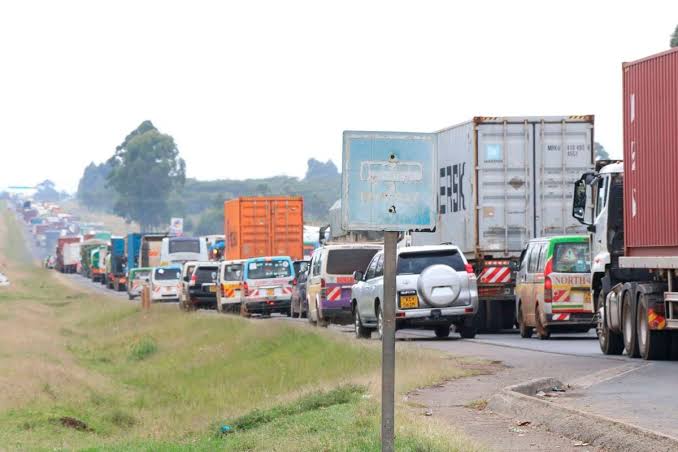A massive traffic snarl-up along the Nakuru–Eldoret Highway left thousands of travelers stranded for more than 20 hours, stretching from Sobea through Mau Summit to Timboroa. The unprecedented gridlock caused widespread frustration among motorists and passengers who were forced to spend the night on the road.
According to traffic officers, the situation began when a single vehicle broke down, blocking part of the busy highway. As drivers attempted to maneuver around the obstacle, many resorted to overlapping, worsening the congestion and bringing traffic to a complete standstill. By Saturday evening, the jam had started to ease slightly, though long queues of vehicles were still visible in several sections of the highway.
The situation caused major disruptions for travelers heading to different destinations. Some, like Irene Achieng, were on their way to attend funerals but found themselves stuck for hours, unable to proceed. Others, including athletes and business people, lamented that their plans had been ruined due to the unexpected standstill.
Those who attempted to use alternative routes, such as the Molo Town road, did not find relief either. The single-lane roads could not handle the increased traffic flow and quickly became clogged. Drivers reported trying several detours only to end up back on the same congested stretch of the main highway.
Many truck and matatu drivers expressed their frustration, noting significant financial losses as they spent the entire day in traffic. Some complained about the lack of traffic management and the poor state of the highway, while others blamed impatient motorists for overlapping and worsening the situation.
“This problem happened because people are not patient. They keep overlapping, and in the end, nobody moves,” one truck driver remarked.
The incident has reignited calls for the expansion of the Nairobi–Nakuru–Eldoret Highway, one of Kenya’s most important transport corridors. The highway serves as a key link between the capital, the Rift Valley, and Western Kenya, and is also a vital trade route to Uganda and other East African countries.
Experts argue that frequent breakdowns, overlapping, and lack of alternative lanes make the route highly vulnerable to gridlocks. As traffic volumes continue to rise, calls for the government to fast-track plans for a dual carriageway expansion have grown louder to prevent future chaos of this scale.

